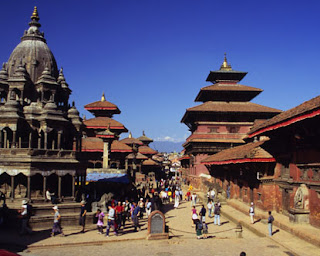The main tourist attraction in Kathmandu: Hanumandhoka: It has its own historic important. It is famous for its old Temples and Places epitomizes the religion and cultural life of the people.Kings of Nepal are crowned here. Other main interesting places are Taleju Temple, Kal Bhairav, Nautale Durbar, the statue of King Pratap Malla. The Jagannath Temple the Big Bell, Big Drum The Temple of Living Goddess 'Kumari' is the main attraction of here, it is situated in Hanumandhoka Palace.
Swayambhunat : this is one of the most glorious 2000 yrs old Buddha Temple. It is situated in about 77m. above the level of the Kathmandu.From here we can see whole view of Kathmandu .
National Museum:It is situated 3kms. west of Kathmandu. Museum has a unique collection of butterflied, birds, mammals, reptiles, verities of plants and fossils.
Pashupatinath Temple:It is the largest and famous temple of Lord Shiva situated 5km east of Kathmandu. It attracts the thousand of tourist in every year.
Bouddhnaath:This is one of the biggest ancient stupa is one of the World it lies 8kms east of Kathmandu.Other tourist attraction are national museum with splendid collection of weapons, artifacts from ancient medieval modern Nepal .Guheswari Temple: It is situated near Pashupatinath Temple only Hindus are allowed to enter here.
 10:26 PM
10:26 PM
 Roma
Roma














